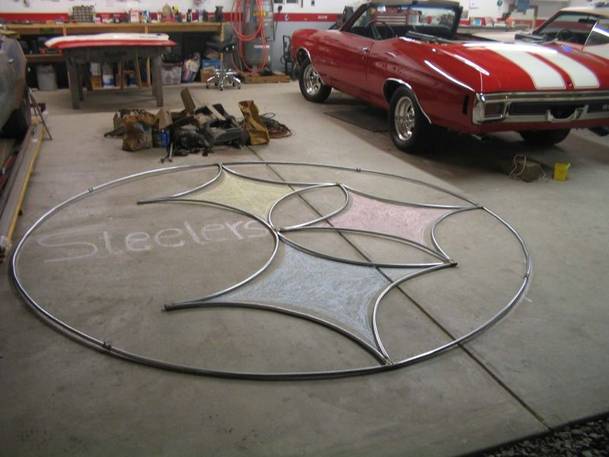Sunday the Pittsburgh Steelers play the Baltimore Ravens in the AFC Championship. As most people who know me know, sports isn't really my thing. But it’s impossible for me to pass up this particular blogging opportunity.
I grew-up in Pittsburgh in the 1970s. The steel mills were closing. The local economy was hurting. But Pittsburgh was the City of Champions. The Steelers. The Penguins. The Pirates. I knew about these teams—I might even go so far as to say I was proud of them. (I’m not forgetting the Spirits, but they were around mostly in the 80s, and champions they were not.)
The 1970s was also an era of high-profile ethnic pride in the U.S. (e.g., “Kiss me, I’m Italian” buttons). My post-WW II-immigrant parents were members of the local chapter of the Dante Alighieri Society and had a large circle of Italian friends, many of whom were also postwar immigrants. So I was even prouder when public figures or current events coincided with my growing consciousness of my Italian American identity.
For example, even as a shy, pigtailed kid, I sensed a curious importance given to one particular football player, Franco Harris.
Outwardly, Harris seemed black to me, but of course I noticed that he was also publicly embraced by Italian Americans for his Italian background. I certainly wasn’t aware of the racial and ethnically-loaded issues surrounding the creation of “Franco’s Italian Army” and his “Immaculate Reception,” but the images stuck with me. (Read Nicholas P. Ciotola’s great history of Franco Harris and Italian Americans in Pittsburgh
here [2].)
Italians-Pittsburgh-American football: I understood this triad.
So recently when my brother, Fabio, sent me a
link [3] with a short video about a Steelers bar (La Botticella) in Rome, I had to pause. He was well aware that I would recognize that this spot would mean more to us than your run-of-the-mill Roman tourist trap. Rome, after all, may signify caesars and La dolce vita to most, but for us it’s Mamma’s hometown, the city she left when she emigrated to Pittsburgh, and the city my siblings and I, in many ways, came to see as our second home. To discover a way that these two seemingly unrelated municipalities—the Iron and Eternal Cities—were connected beyond our family tree was exciting.
Giovanni Poggi’s [4] Terrible Towel-strewn bar, just a short walk from Piazza Navona, is one of those cultural locations that points to the unexpected results of transnational migration and global tourism. (I haven’t been able to uncover Poggi’s full story, but it seems that he spent some part of his teen years in Canada—why he’s not a fan of a Canadian Football League team is another mystery.)
In early 2006, when the Steelers last headed to the Super Bowl, my brother, with his creative and skilled hands, built an enormous lighted sign and hung it on his garage in Western Pennsylvania. (See the pdf attached below for a short piece about the sign in a local paper, The Butler Eagle.) Made from half-inch steel tubing—electrical conduit—the lit sign filled the night sky.
Invoking the Steelers “working class roots,” as the team’s website describes, both its name and logo come from the Steelmark logo of the American Iron and Steel Institute, the sign is one of thousands of displays of fans showing support. But for me, it’s another way that Italians, Pittsburgh, and American football come together.
Go Steelers!



